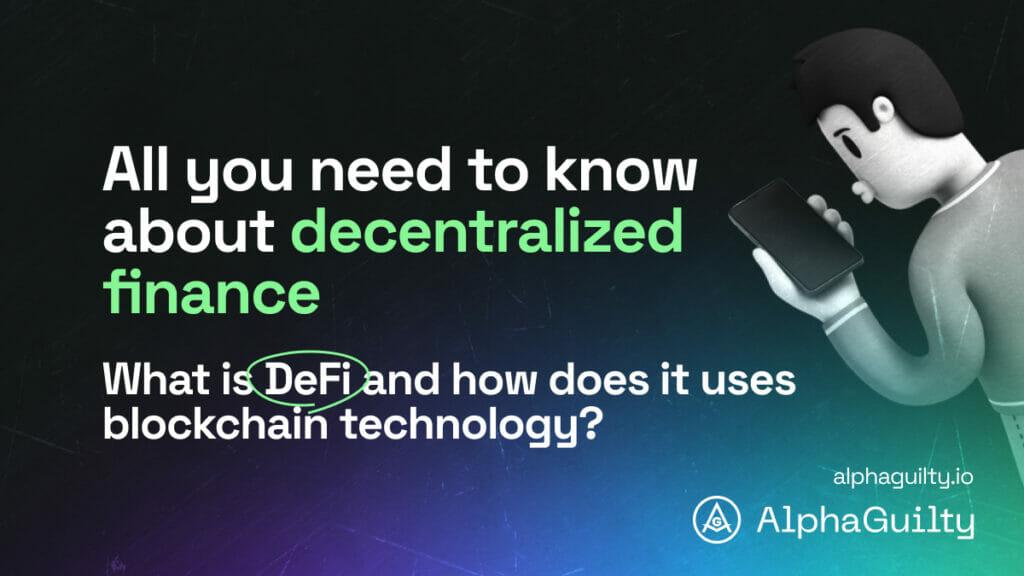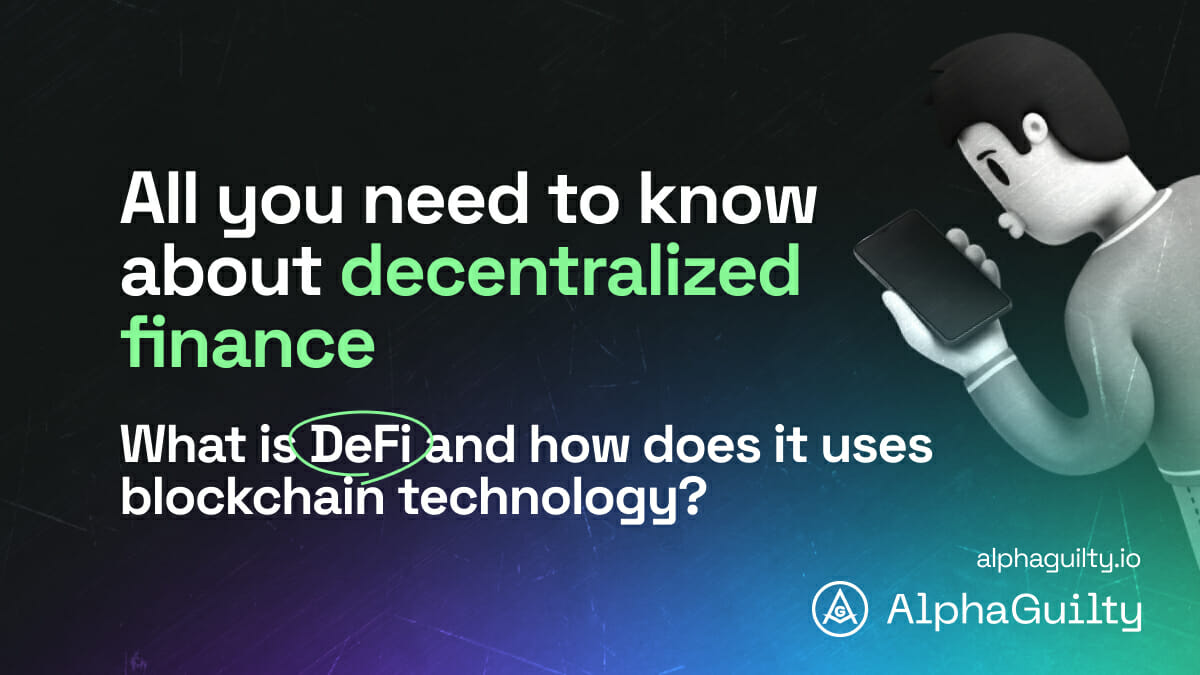
Today, DeFi and blockchain technology have become an integral part of the cryptocurrency economy and counterparts to the traditional financial system. Now people store money in a secure digital wallet and conduct financial transactions in seconds without intermediaries and third parties. Anyone with a stable Internet connection can use the DeFi application, plus it’s very convenient and transparent.
So we will be discussing a very important and relevant topic of DeFi work. DeFi is likely to be the fastest-growing trend in the cryptocurrency industry in 2023. That’s why both beginners and experienced crypto enthusiasts need to know how decentralized finance works and who can benefit from it.

What is decentralized finance?
This is a publicly available ecosystem of financial services and apps based on public blockchains (mostly ETH). DeFi also works without any centralized authority. DeFi covers all aspects of financial services and financial transactions (it can also be lending, borrowing, and trading).
At a time when the government is trying to centralize all financial services, a solution based on blockchain technology is just perfect. Any user can interact with decentralized finance and manage assets through P2P and dApps. Let’s take a look at all the major advantages of DeFi right away:
- It’s transparent. The source code of DeFi applications is open, which allows anyone to understand the functionality of a smart contract or identify bugs. All transaction activity is public (financial transactions are pseudo-anonymous).
- There are no centralized structures in DeFi and that’s great. All rules are written in a smart contract. Once the smart contract is deployed, the DeFi app can run autonomously, requiring minimal or no human intervention. Smart contracts govern all financial services.
- Anyone can create and use the DeFi app. Unlike the traditional financial sector, there are no dispatchers or accounts that require complex forms to work with. Through wallets, users interact directly with smart contracts.
- New DeFi apps can be created by combining other DeFi products (e.g. stablecoins or exchanges). This feature of DeFi is similar to a model in which a given structure can be assembled in various combinations. In addition, most of these apps are available to any user.
- Decentralized finance also provides an adaptable user experience. If you don’t like the app interface, you can create your own. Smart contracts are like an open API for which anyone can build apps.
So, DeFi refers to a new financial system built on blockchain technology. In DeFi, apps are created using smart contracts on a blockchain, allowing for control and management of financial services or transactions without the need for third parties.
The DeFi ecosystem also consists of crypto assets, such as tokens, and stablecoins. Users’ funds are stored in digital wallets. All transactions here are quick to execute, there is no long chain of brokers. This is convenient for deposits and lending. For example, the lender doesn’t have to share the profits with the bank, which accepts deposits at one interest rate and gives loans much higher.
Some disadvantages of DeFi
However, despite the many advantages, such financial services on blockchain technology also have their drawbacks:
- One of them is the low performance of the system. This is because blockchains are slower than their centralized counterparts, requiring additional product optimization.
- Another drawback is the high risk of user error. These apps transfer responsibility from intermediaries to users, which can be a negative aspect. Developing solutions that can minimize the risk of error is particularly challenging when products are deployed on top of a blockchain.
- One more disadvantage is that development control is in the hands of one team. This problem is not always relevant, as some platforms involve working with users on improvements, but it is faced by many. In particular, challenges arise at the point where responsibility is delegated to the community.
In addition, this ecosystem is also characterized by instability. Finding the most appropriate app can be difficult, and users must have a certain skill set to choose the best option.
What does DeFi do?
DeFi’s primary goal is to change the conventional financial system, which relies on centralized institutions to facilitate transactions. Thanks to these technologies and open-source DeFi protocols, more people have access to new financial services, exchanges, and platforms. DeFi also helps users earn money on cryptocurrency assets and save on transaction costs. To make it easier to understand, let’s look at all the DeFi uses and how it works:
- Generate ongoing income and rewards on your cryptocurrency by lending it out instead of receiving a monthly payout.
- Secure a loan instantly and without the need for extensive paperwork, including access to ultra-short-term loans that are not available from traditional institutions.
- Engage in P2P trading of selected cryptocurrencies, similar to buying and selling stocks without a brokerage intermediary.
- Allocate your cryptocurrency holdings to alternative savings accounts and earn higher interest rates compared to traditional accounts.
- Take advantage of long or short positions on specific assets, similar to the crypto counterpart of stock options/futures.
Let’s also talk about other ways to use this technology. You already know that stablecoins are cryptocurrencies whose value is tied to a fiat asset. MakerDAO, for example, offers another model of stablecoins. The issuance pattern of Dai’s stablecoins can be compared to gold-backed money. The distinction is that ETH cryptocurrency is used instead of gold.
Now let’s talk about exchanges, in this case, DEX (most people today have confidence only in these exchanges). It is a decentralized exchange, which doesn’t keep funds and users’ info on exchange servers. Such an exchange acts solely as a platform for matching orders to buy/sell cryptocurrencies.
The system of these exchanges works in such a way that each transaction is conducted between users directly, and the exchange doesn’t access/store the crypto of its clients. Such exchanges offer a new model of crypto trading and exchange. One of the most successful and actively developing decentralized exchanges is Uniswap.
DeFi is also used to create prediction markets, services, and games (items in these games are usually non-fungible tokens that can be sold). The number of these projects is steadily growing. Some DeFi protocols enable liquidity mining and yield farming. The last concept refers to any action aimed at obtaining crypto for some kind of activity. It can be giving or taking credits, providing liquidity. Farming has gained a lot of popularity because of the opportunity to earn a good income.
What is the total value locked in DeFi?
Before you try to make money on a project, you need to analyze how dangerous it is to invest tokens or other digital assets there. This is where the TVL can help. One indicator of a project’s sustainability is how much funds other users currently have in its contract. Let’s understand what TVL is and why you should always pay attention to this indicator.
TVL shows the amount of blocked or frozen crypto funds on the project’s smart contract or liquidity pool. In other words, when you see the TVL abbreviation, it means how much cryptocurrency is currently invested in that particular project. The higher the number of funds, the better and safer it is for the potential investor.
With a high TVL, there is no risk of a sharp collapse of staking/farming. There will not be a situation where multiple users who have invested their tokens will take them out, sell the accumulated cryptocurrency and leave you with nothing. The more frozen tokens — the more people are interested, supporting, and developing this crypto project.

Conclusion: how does DeFi challenge banking?
In a world where states are trying to centralize all transactions, this technology comes in handy. Now DeFi offers many of the same services as banks, including earning interest, borrowing/lending, buying insurance, trading derivatives/assets, and more. However, this technology is faster, more efficient, and doesn’t require extensive paperwork or a third-party intermediary in transactions.
Today DeFi could provide financial services and transactions that are more accessible, and inclusive. All applications are accessible to anyone with a smartphone or computer. This eliminates the need for a physical bank branch and allows people to participate in financial activities from anywhere in the world. Now, cryptocurrency is opening up new opportunities for innovation and growth in the financial area. So, this is a real contrast to ordinary banking, where a central government controls the system.
Is Bitcoin a decentralized finance?
BTC is considered a decentralized digital currency, but it is not a comprehensive DeFi on its own. However, some DeFi applications may use BTC as a form of collateral or payment.
